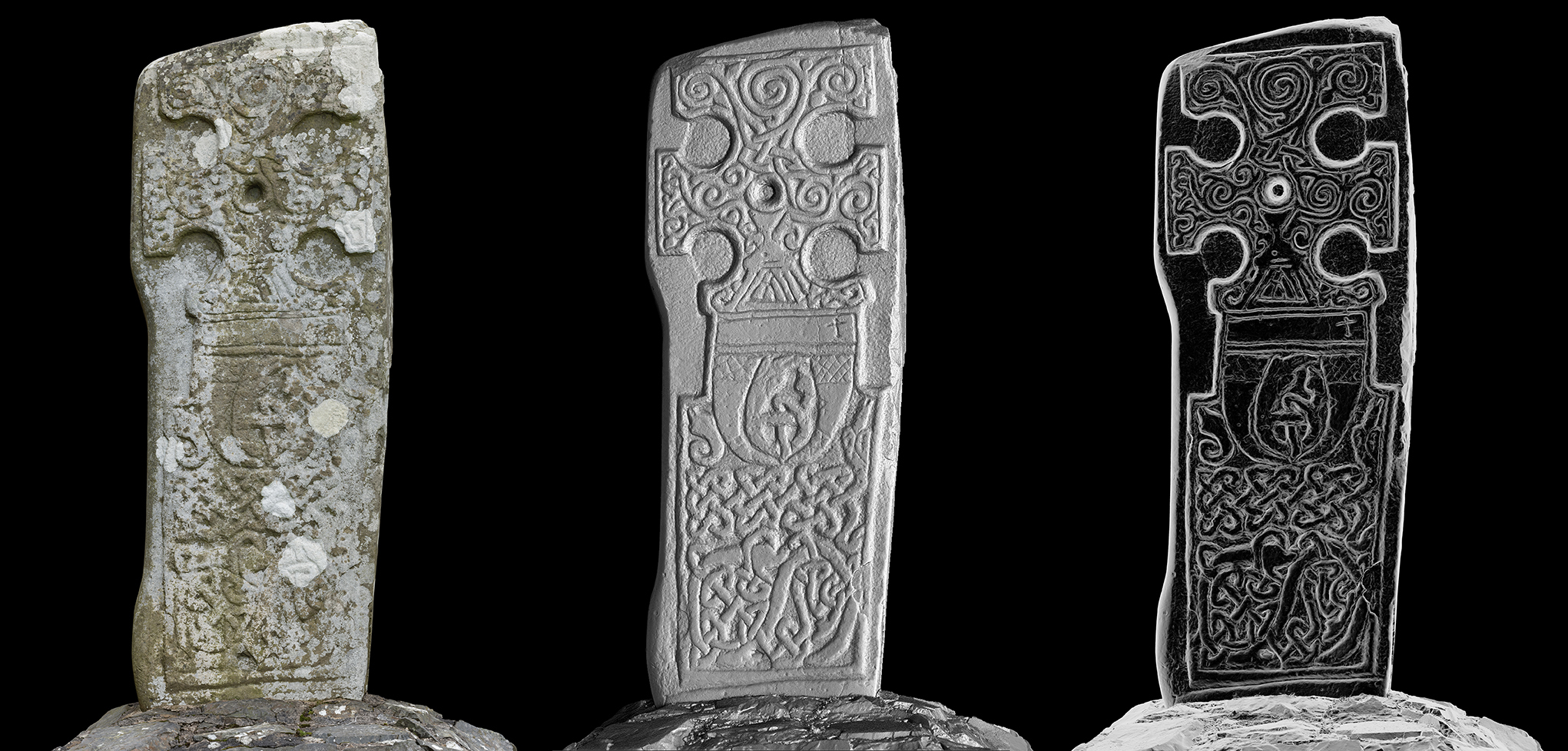In February 2021, as a part of the Rhins Revealed Project, we were delighted to welcome Prof. Carol Neuman de Vegvar of Ohio Wesleyan University in giving a talk via Zoom on the significance of the imagery of the Kilmorie Stone.
Carol is an art historian with a focus on early medieval western art. She was intrigued by the curious presence of what appear to be drinking horns on the Kilmorie Stone, leading her to delve deeper into the stone’s symbolism. We are very grateful to Carol for sharing her thoughts with us, which are summarised briefly below.
The Kilmorie Stone
The Kilmorie Stone stands in the churchyard of the early Kirkcolm Church in the north Rhins of Galloway.
The name Kirkcolm evokes a church dedicated to either St Columba or, more probably, his successor Cuimín, and is one of several Irish saint dedications in the area.
The cross has been in its current location only since 1989. It stood originally at Saint Mary’s Chapel in Kilmorie, south of Kirkcolm. By the early 18th century, the chapel at Kilmorie was in ruins. When the parish church at Kirkcolm was restored in the early 18th century, the cross-slab was removed from Kilmorie and re-used as the lintel of the west doorway at Kirkcolm.
In 1821 the church at Kirkcolm in turn was demolished and the cross-slab was moved to the grounds of Corsewall House, northeast of Kirkcolm. In 1989, the cross-slab was moved to its current location at Kirkcolm Church.
The stone stands 1.7m tall and is carved on both sides. The sculpture of the Kilmorie cross-slab has been variously dated in the 9th and 10th century and has variously been called early medieval, Pictish, or Viking. However, the two sides of the cross are quite different in style and technique, and it is likely that they were carved by different people, at different times.
Kilmorie Stone at the Kirkcolm churchyard in the north Rhins of Galloway



decipher the carvings⚬
decipher the carvings⚬
decipher the carvings⚬
decipher the carvings⚬
decipher the carvings⚬

One face is usually considered the front of the slab because it bears the image of Christ on the cross. It is carved in very shallow relief with details added as incised lines. Below the crucifix stands a figure flanked on the left by two large birds, possibly eagles, and on the right by a large pair of tongs, and above them a pair of quadrilateral blocks.
The lower figure might represent a Roman soldier, with the pincers referring to the eventual removal of the nails and, the blocks referring to the dice cast for Christ’s robe. However, the tongs could also represent blacksmith’s equipment, the blocks perhaps being an anvil. If so, this scene might instead represent a character from Norse mythology: Odin with his ravens, Huginn and Muninn; or Sigurd at the forge learning the language of the birds.
Given the presence of many Irish saint dedications in the Rhins and the probable dedication of Kirkcolm to Cuimín (Columba’s successor as Abbot of Iona), the scene could equally relate to Columba’s vision of the ascent to heaven of the smith Columb Coilrigin, as narrated in Adomnán’s Life of the Saint. Alternatively, the stone might represent a memorial for a smith. Smiths were considered high ranking members of society in medieval Britain, perhaps because of the transformative nature of their craft.
The relief carved side of the Kilmorie Stone shows a T-topped and equal-armed cross with round re-entrant angles, which stands on a clearly outlined stepped base, probably an altar. The arms are decorated with a thick, spiralling scroll, a motif that is thought to have originated in Cumbria. At the centre of the cross is a circular hollow that may have held a metalwork fitting, a relic, or possibly some combination of the two. Beneath the hollow is an hourglass-like shape, probably a chalice.
Below the chalice is a trapezoidal shape bearing a series of diagonal lines. This perhaps represents a loaf of bread or a supportive stand for the chalice. The stepped base below the cross includes a plain rectangle inscribed at its right end with a cross. The incised cross is perhaps a later addition, and the panel might once have had a painted inscription
Below this blank area are two horns with bands of incised cross hatching marking their wider and pointed ends, probably drinking horns, which in this period frequently had ornamental metal rim mounts and terminals. The horns frame an animal or animals that form an interlaced knot.
Below the horns, the base is carved with more animal interlace, perhaps representing ornamental carvings on the front of the possible altar, or as woven or embroidered designs on an altar cloth. The carving on this side of the Kilmorie slab is certainly not as sophisticated as other comparable examples.
The other side of the stone, usually identified as its back, is much more consistently carved in low relief than the front. Unlike the front of the stone, this side was probably carved by a highly skilled or highly trained craftsperson.
However, if the imagery of this side of the Kilmorie slab does refer to Norse mythology, it would be the only example in Galloway. What’s more, scenes involving Norse mythology in the British Isles tend to be rather formulaic and the Kilmorie scene doesn’t fit the formula, as such.
Regardless of whom the figure represents, it helps date the stone: the proportions of the figure with raised or humped shoulders are paralleled in Norse-period stone sculpture and suggest a 10th century date for the incised side of the stone.
However, it certainly represents the work of someone more skilled than whoever created the incised imagery on the other side of the slab. The imagery here also has greater potential for multiple levels of meaning, suggesting that this may have originally been the front of the slab. The incised imagery on the other side may have been a later addition, perhaps to repurpose the slab as a memorial or to connect it to a particular saint dedication.
More Thoughts on the Drinking Horns



